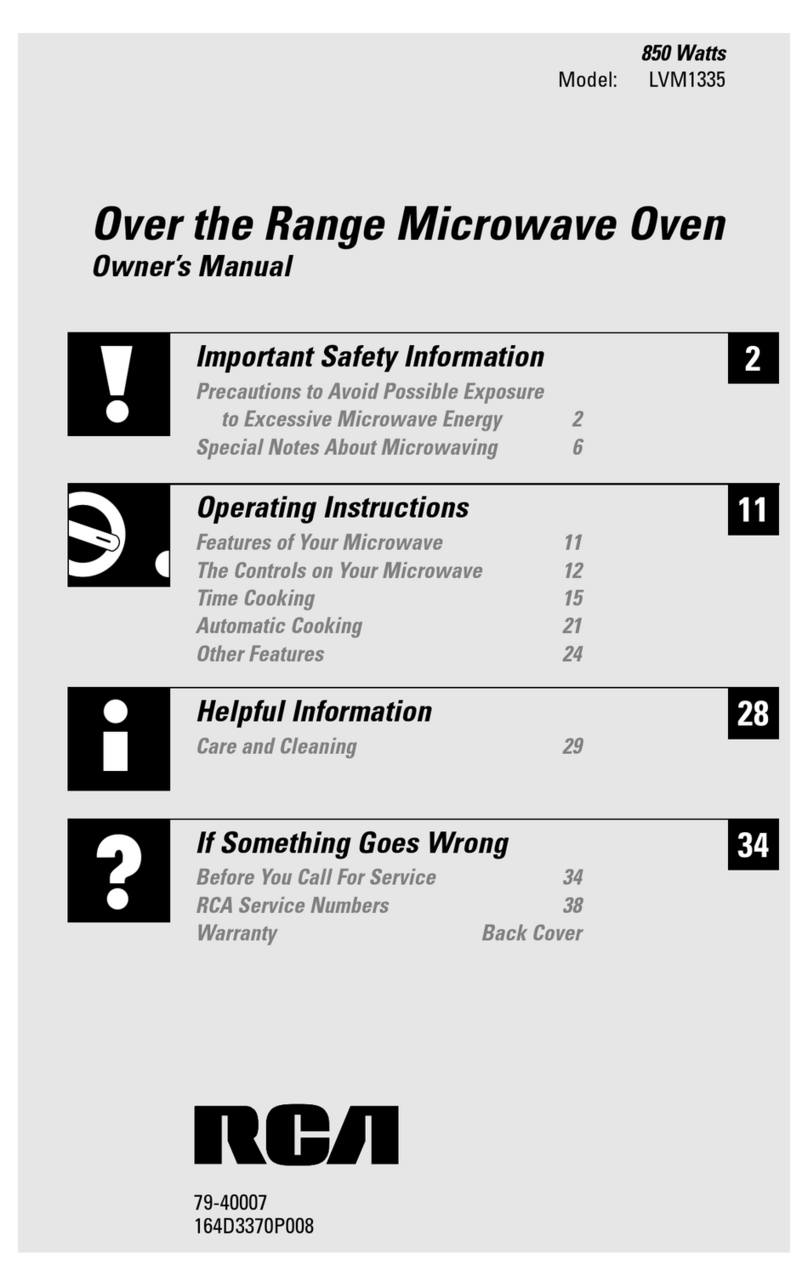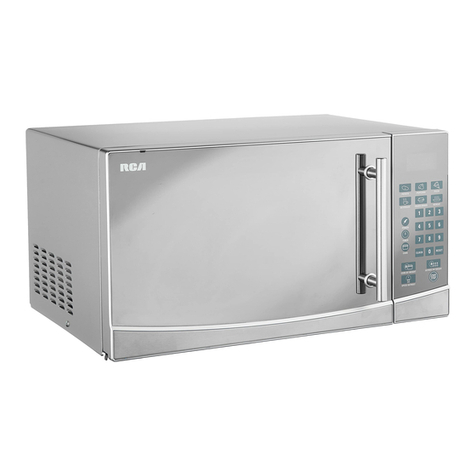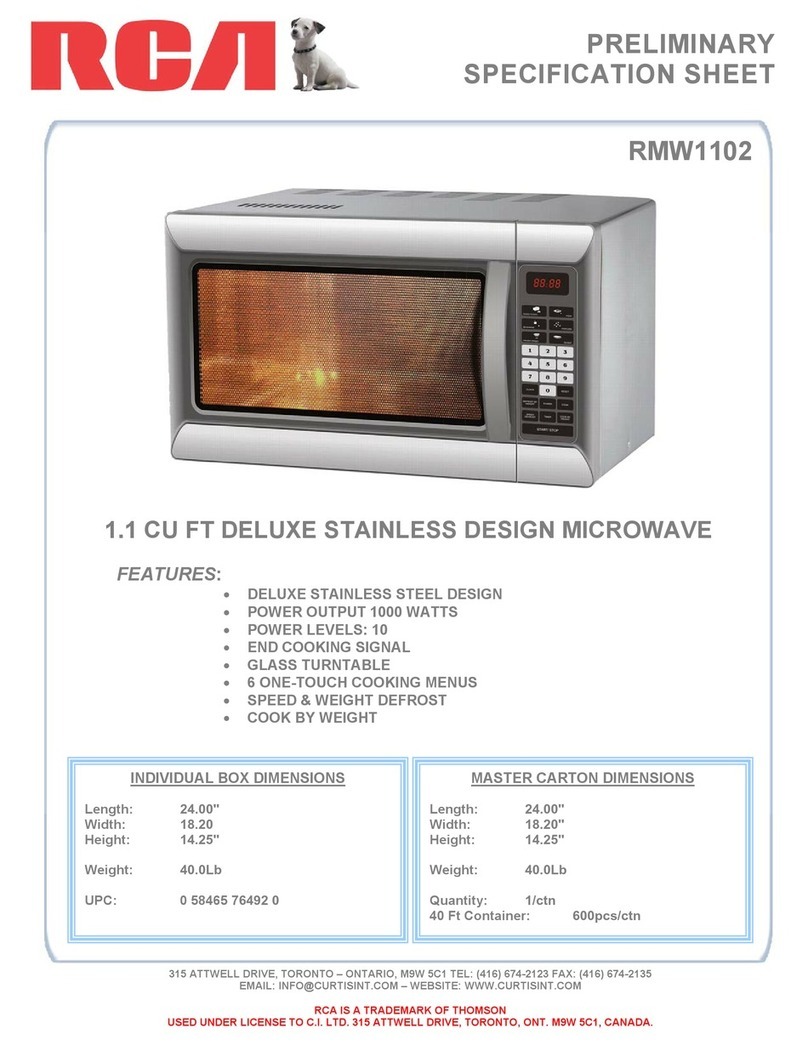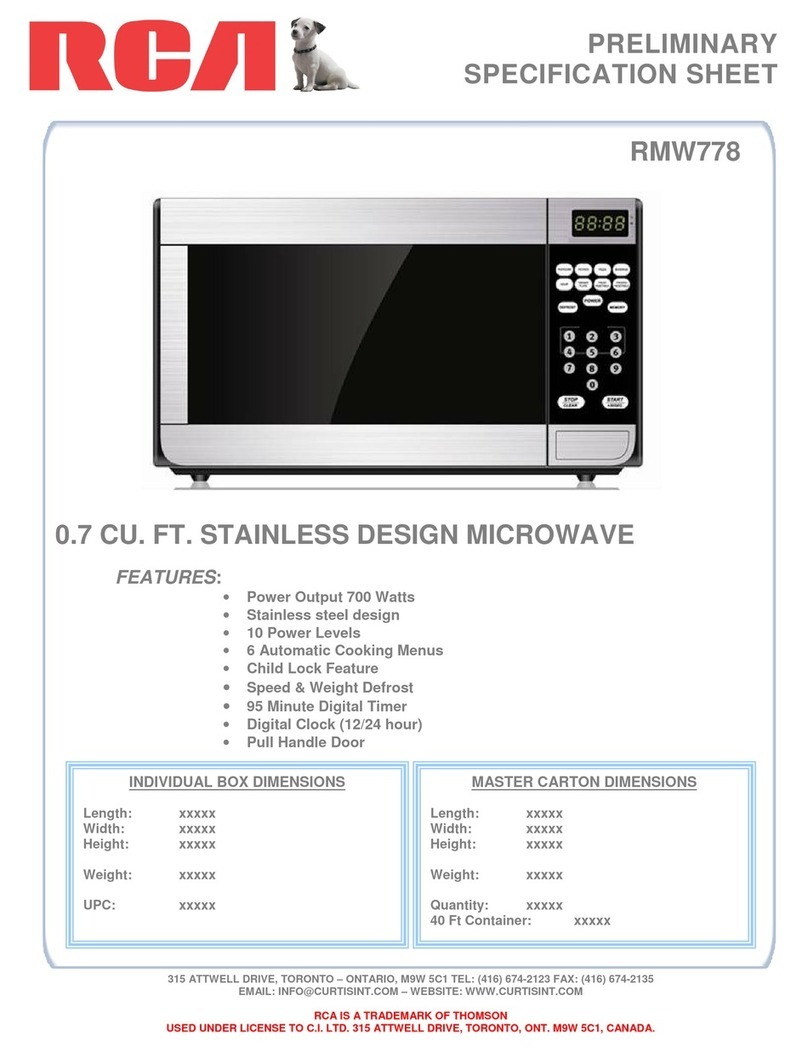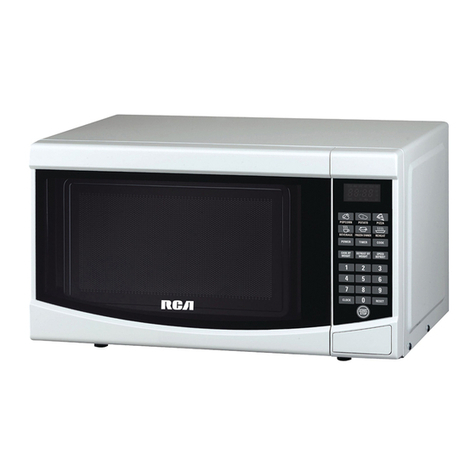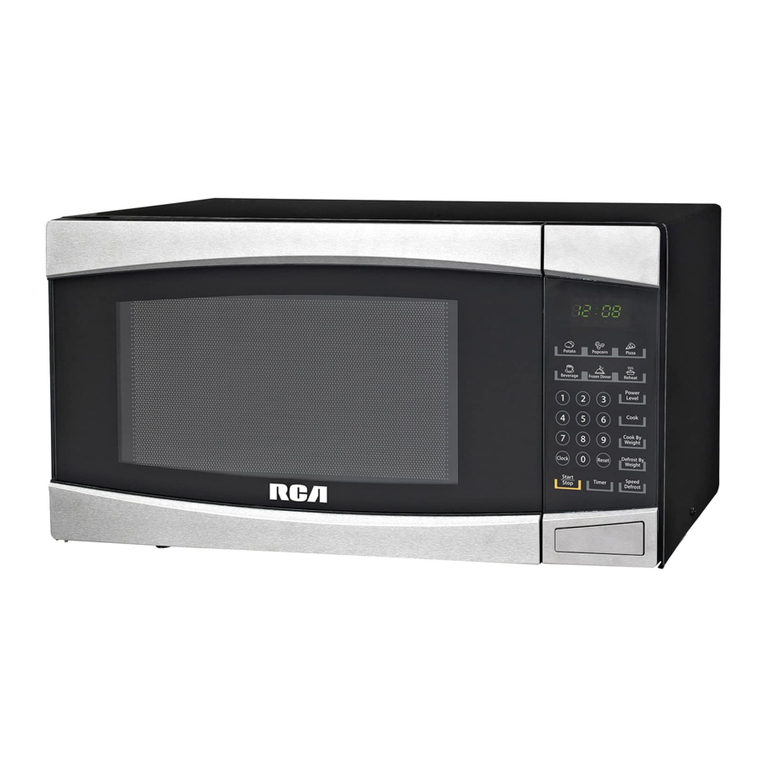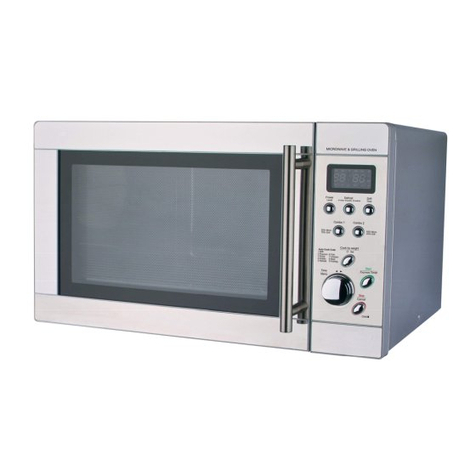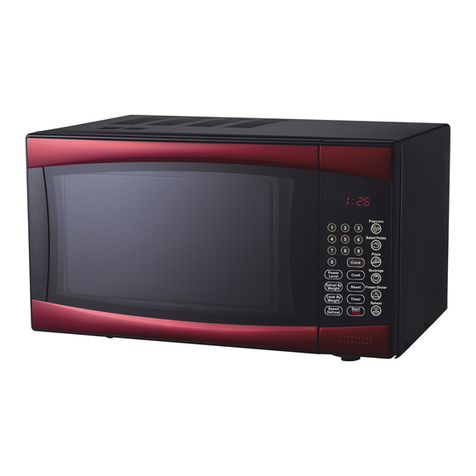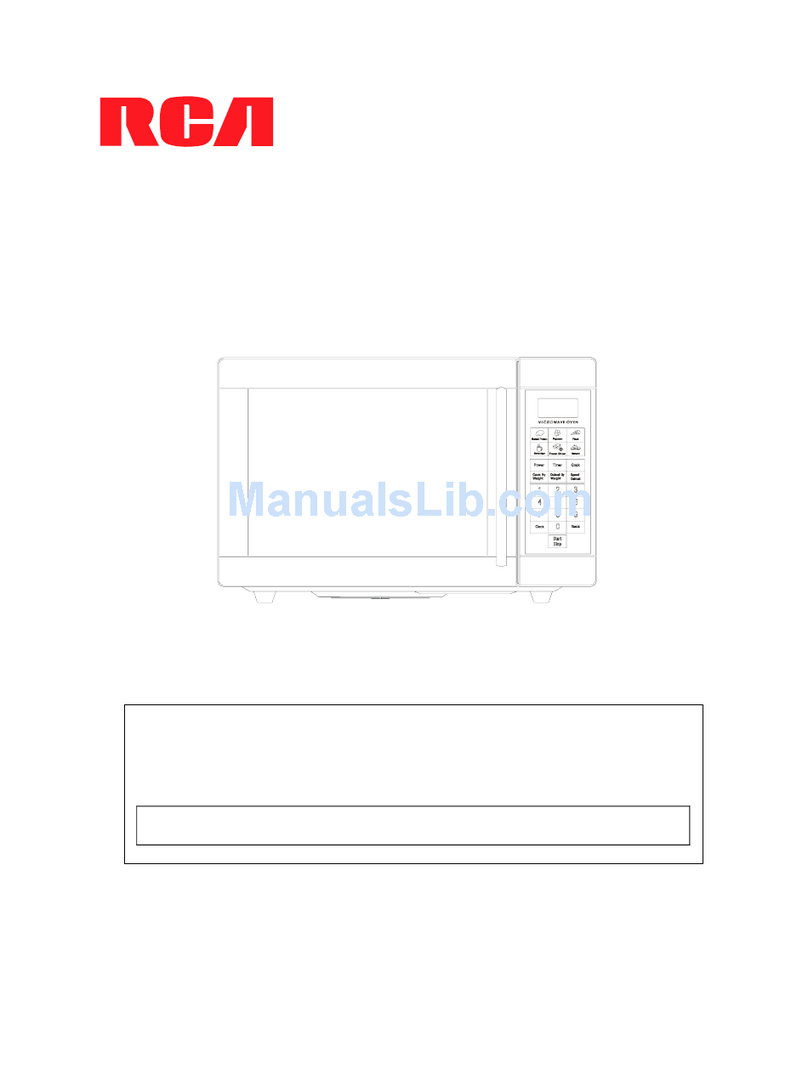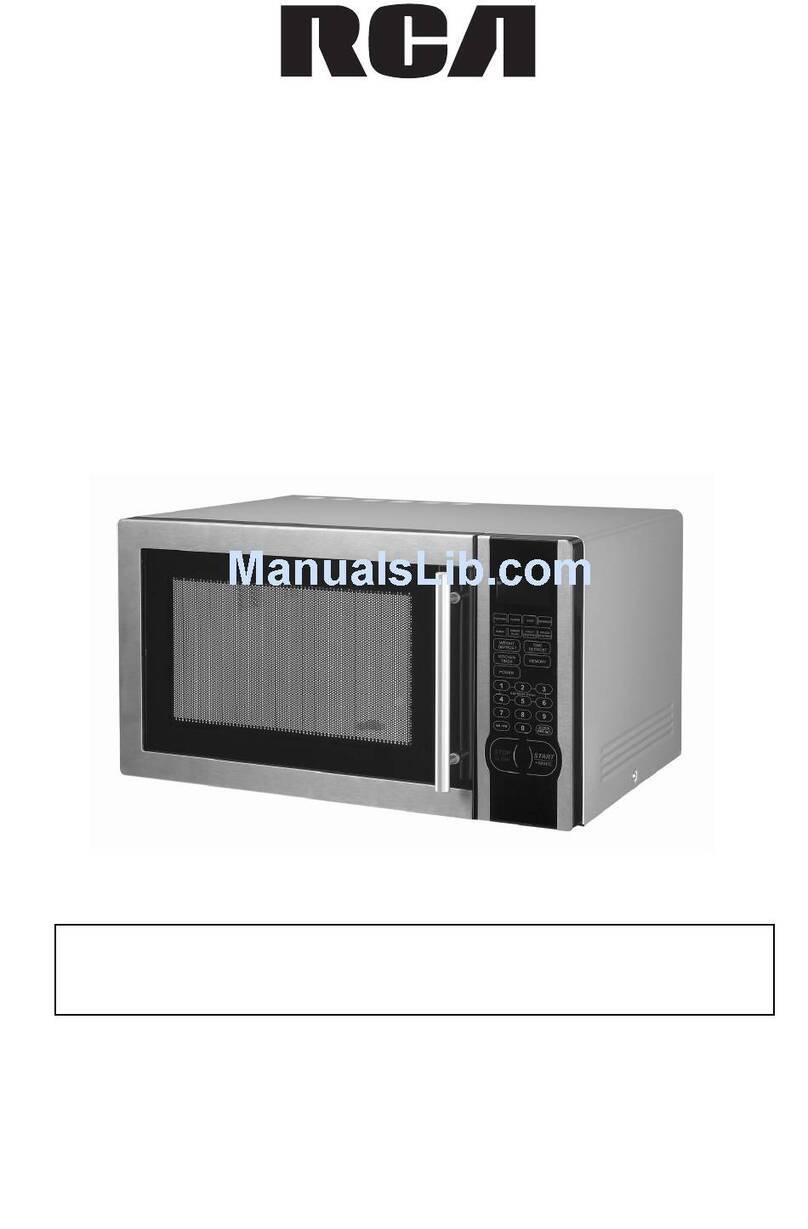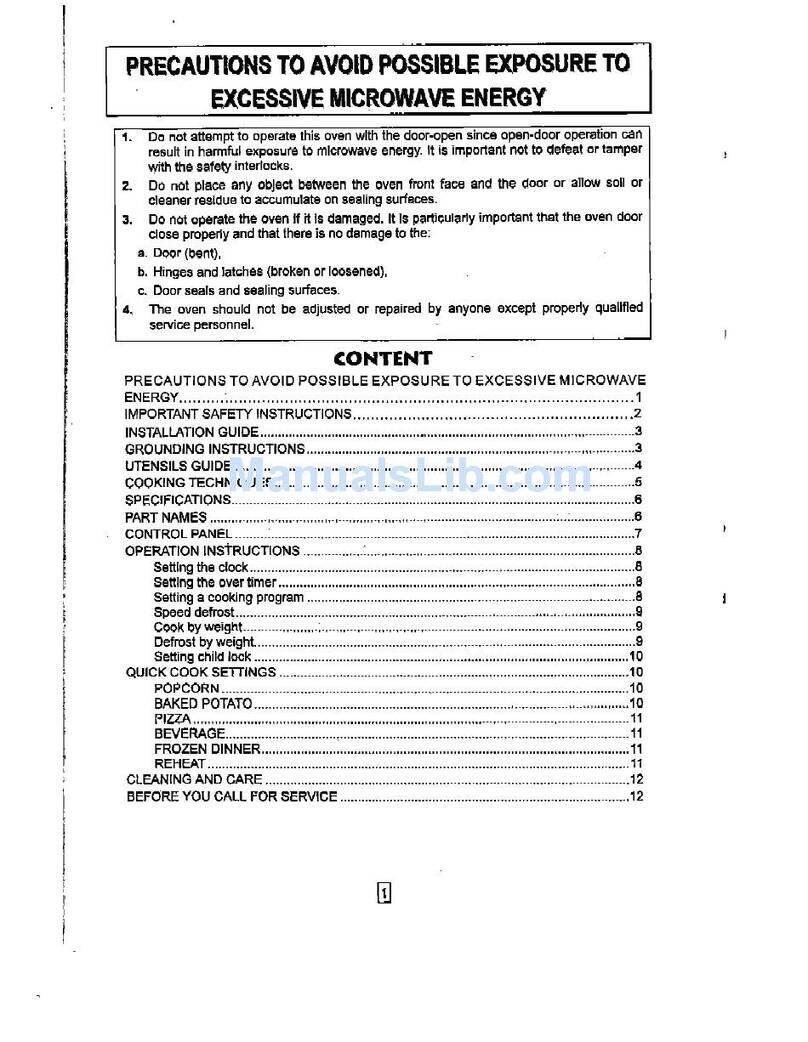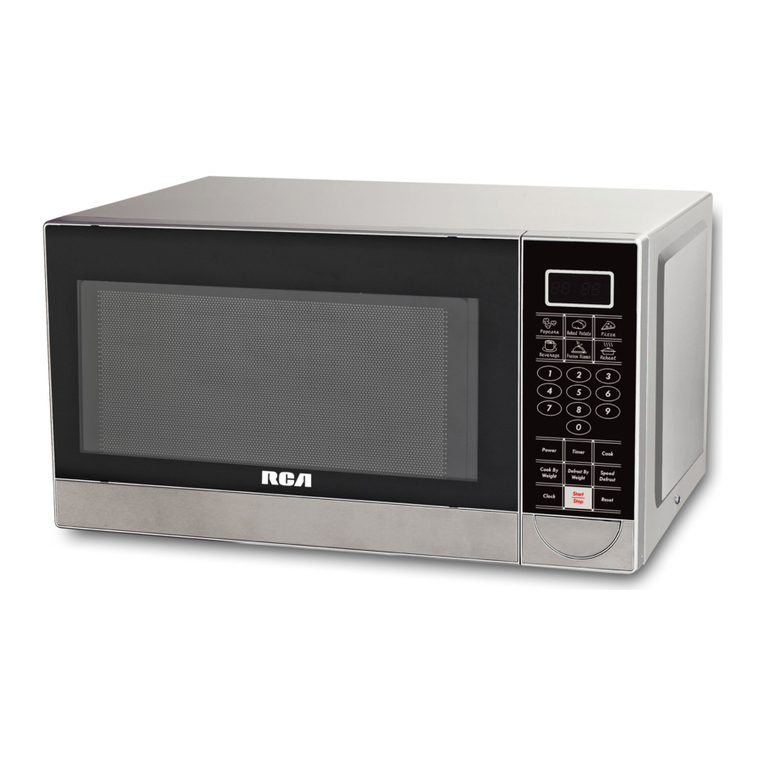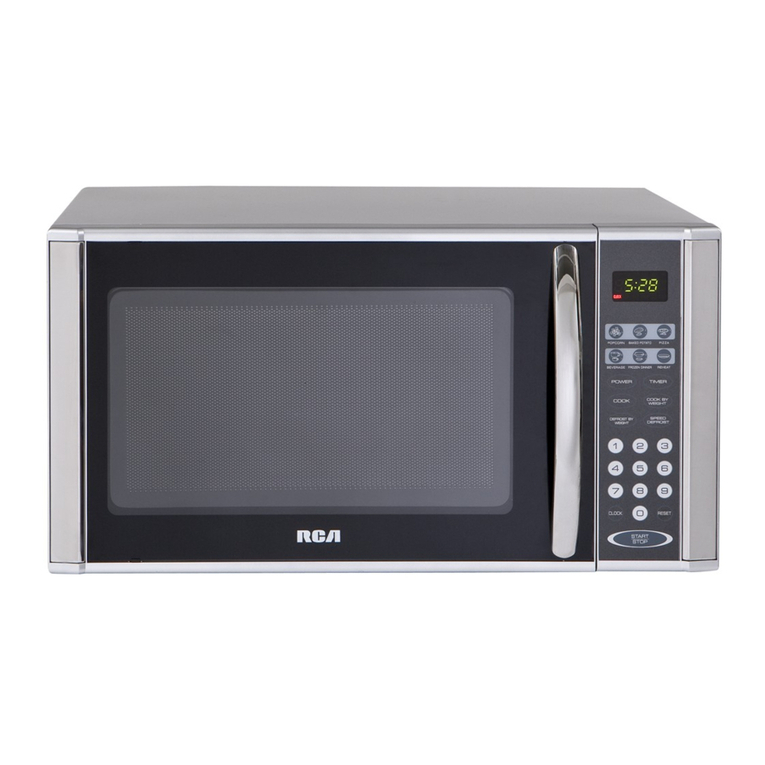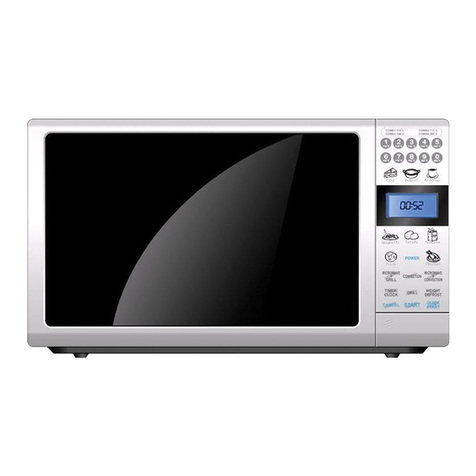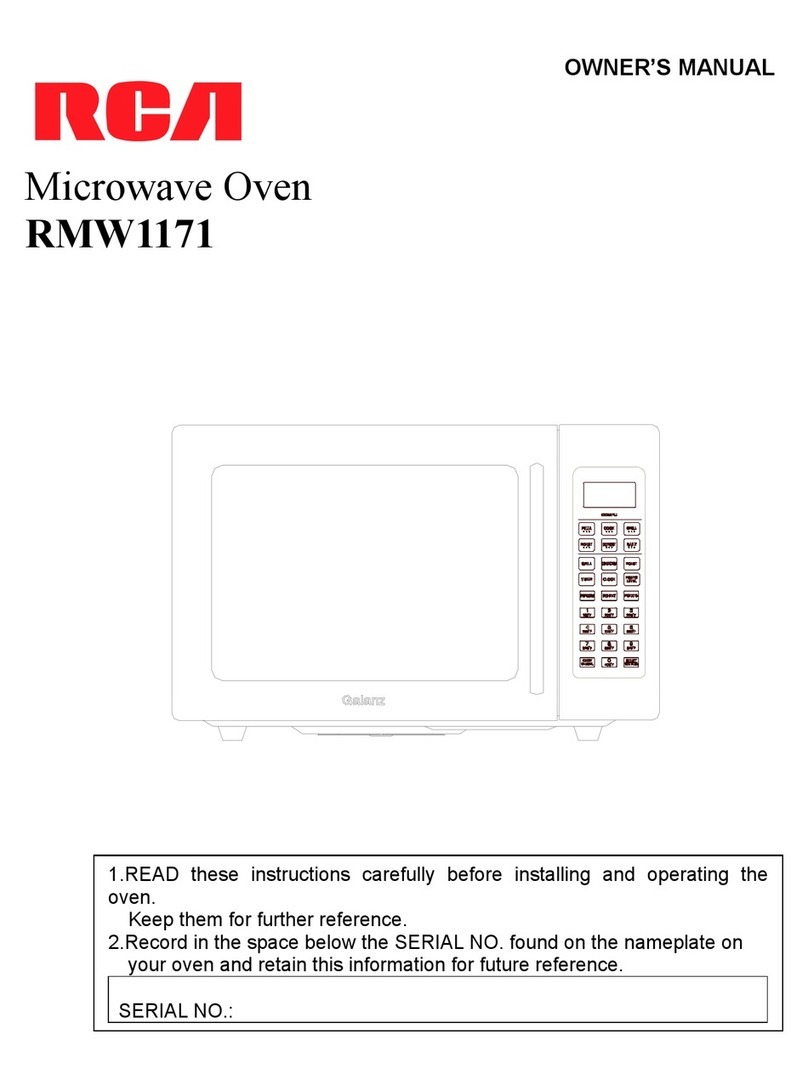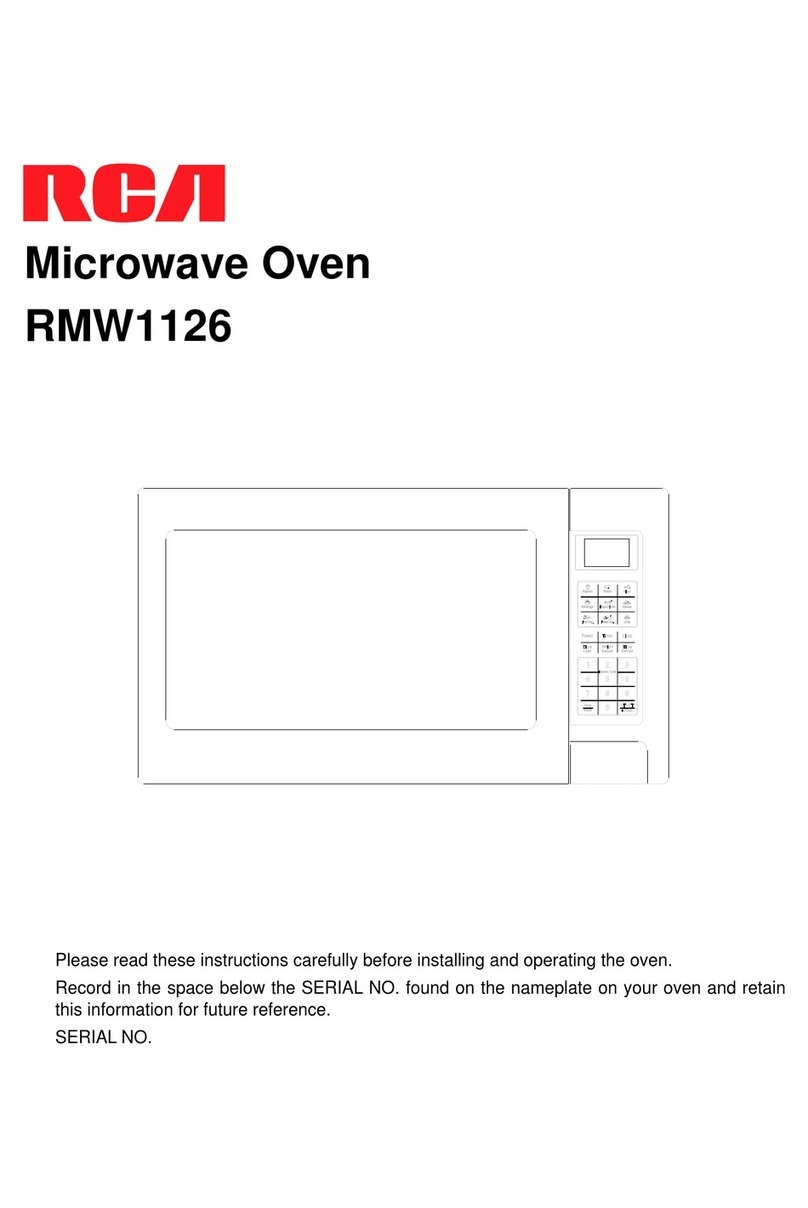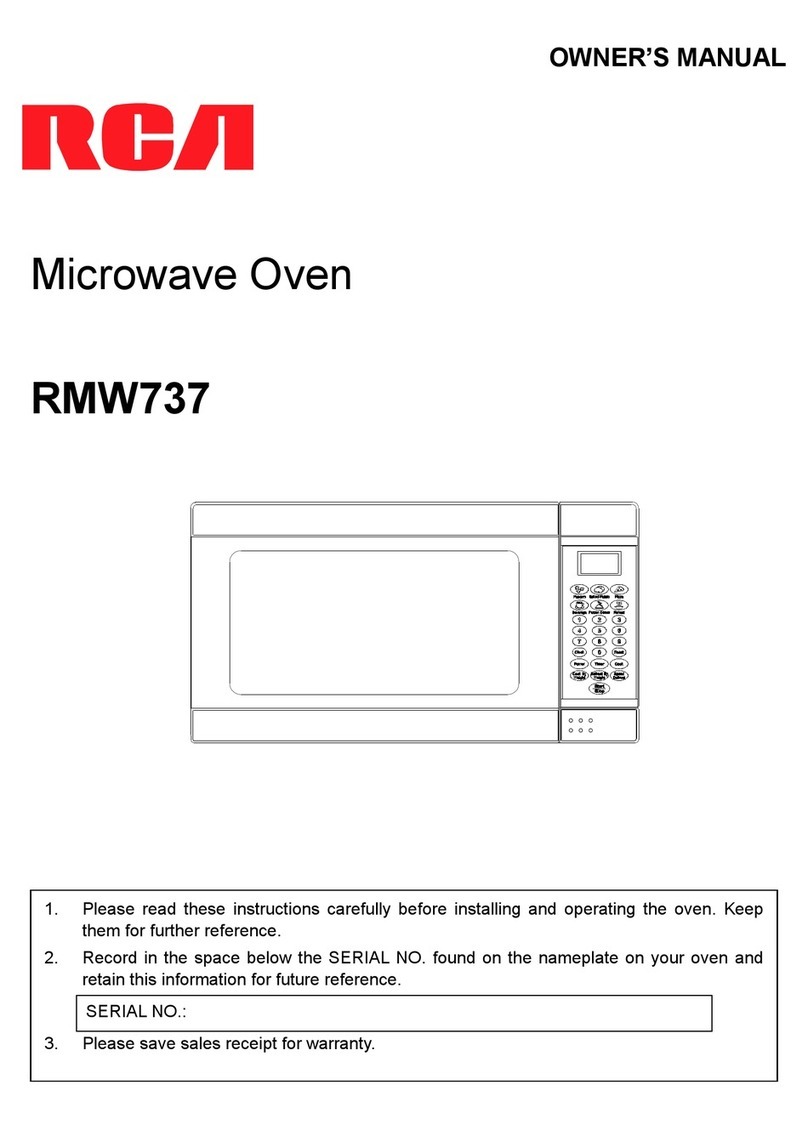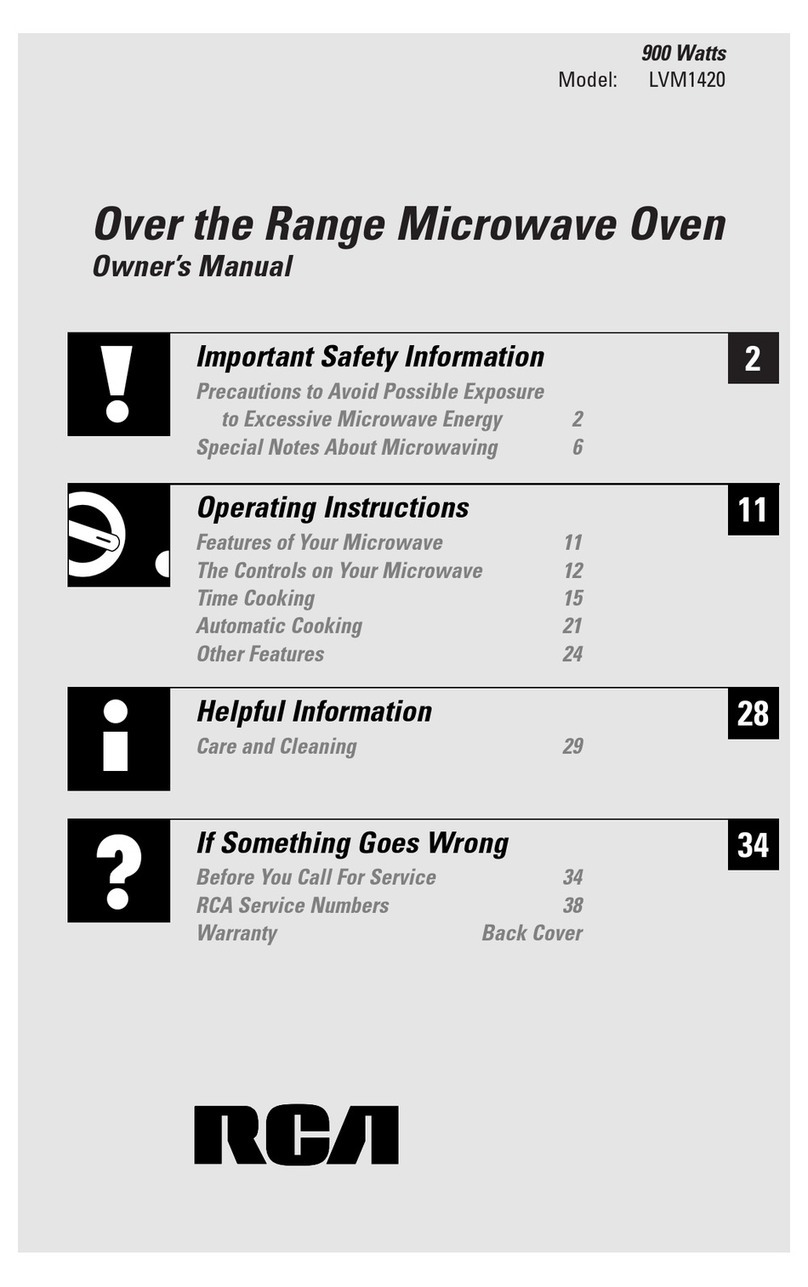
near the appliance.
electrician or serviceman install an outlet
supply cord is too short,have a qualified
2)Do not use an extension cord.If the power
rating of the appliance,or
shallbe equal to or greater than the electrical
The marked rating of the extension cord
that will accept the plug on the appliance.
3-blade grounding plug,and a 3-slot receptacle
use only a 3-wire extension cord that has a
1)If it is necessary to use an extension cord
properly grounded,and either:
existsas to whether the appliance is
are not completely understood,or if doubt
serviceman if the grounding instructions
Consult a qualified electrician or
5
Power Supply Cord
1. A short power supply cord is provided
to reduce the risks resulting from
becoming entangled in or tripping over
a longer cord.
2. Longer cord sets or extension cords
are available and may be used if care
is exercised in their use.
Radio or TV Interference
Should there be any interference caused by
the microwave oven to your radio or TV,
check that the microwave oven is on a
different circuit, relocated the radio or TV as
far away from the oven as feasible or check
position and signal of receiving antenna.
UTENSILS GUIDE
This section lists which utensils can be
used in the microwave, which ones have
limited use for short periods, and which
ones should not be used in the microwave.
Recommended
gMicrowave browning dish üUse to
brown the exterior of small items such as
steaks, chops, or pancakes. Follow
the directions provided with your
browning dish.
gMicrowaveable plastic wrap üUse to
retain steam. Leave a small opening for
some steam to escape and avoid placing
it directly on the food.
gPaper towels and napkins üUse for
short-term heating and covering; These
absorb excess moisture and prevent
spattering. Do not use recycled paper
towels, which may contain metal and
could ignite.
gGlass and glass-ceramic bowls and
ü
dishes Use for heating or cooking.
gPaper plates and cups üUse for
short-term heating at low temperatures.
Do not use recycled paper, which may
contain metal and could ignite.
gWax paper üUse as a cover to prevent
spattering.
gThermometers üUse only those labeled
“Microwave Safe” and follow all directions.
Check the food in several places.
Conventional thermometers may be used
on microwave food once the food has been
removed from the oven.
use onl
a 3-wire extension cord that has a
Limited Use
gAluminum foil üUse narrow strips of foil
to prevent overcooking of exposed areas.
Using too much foil can damage your
oven, so be careful.
gCeramic, porcelain, and stoneware ü
Use these if they are labeled “Microwave
Safe”.
too thin to be used in a microwave. It can
shatter and cause damage and injury.
gPaper bags üThese are a fire hazard,
except for popcorn bags that are
designed for microwave use.
gStyrofoam plates and cups üThese can
melt and leave an unhealthy residue on
food.






